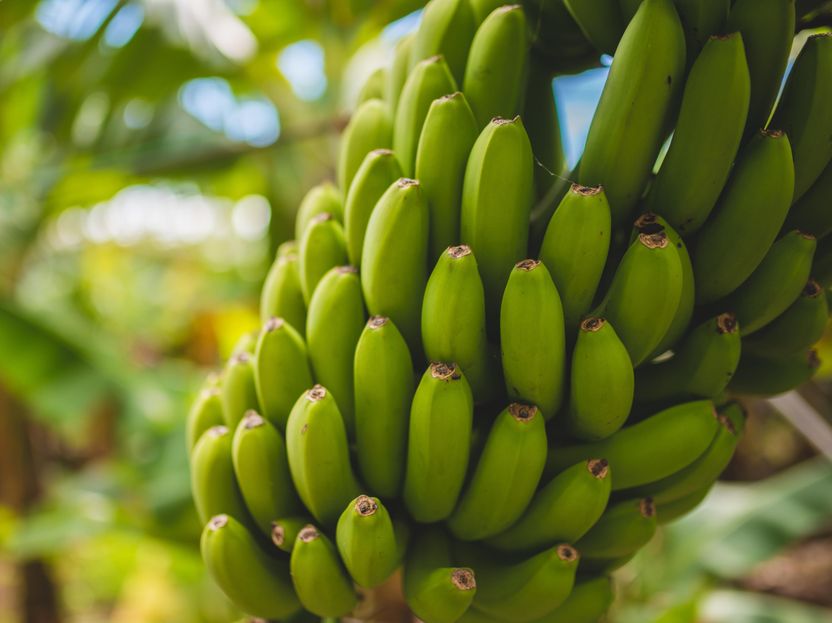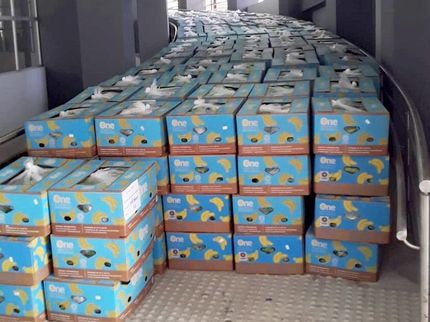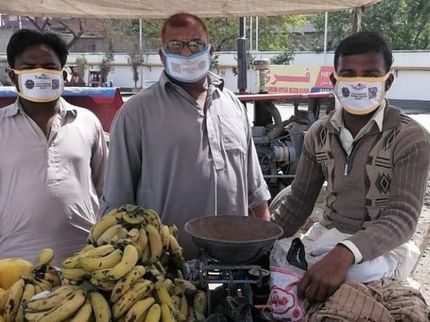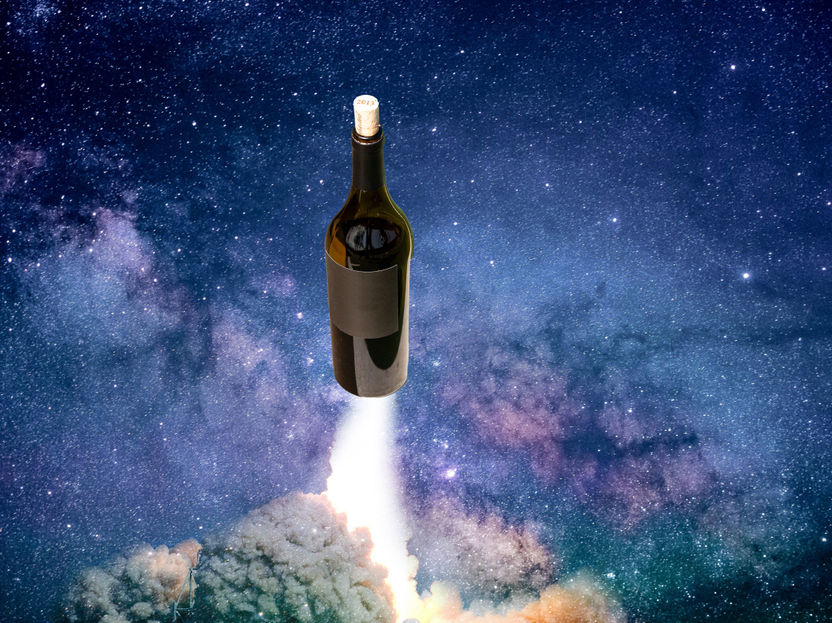The banana - miracle of logistics or natural product
Freshly fumigated bananas
Two scientists describe the fruit, as it is sold in this country, as a miracle of logistics. The trade, however, presents it to consumers as a purely natural product.

Photo by Monika Guzikowska on Unsplash
Why is it possible to send a commodity as perishable as the banana around the globe unscathed? "Because the banana is nature engineered to man's specifications, a biofact," answers scientist Linda Hering. "The term biofact derives from the Latin bios for life and facere for to make. The banana still has a living, biological component, but the vast majority of what makes up our super and organic market banana is man-made. As a result, there is an enormous amount of technical knowledge inscribed in the banana, including how it has to be transported across the Atlantic so that it doesn't rot," says Hering. However, the technical design is not conducive to marketing the banana. That's why a lot of "harvest freshness" comes into play when it comes to selling. We'll get to what that's all about later. But ecological and social expectations such as those of sustainable cultivation and fair working conditions also have an effect on the fruit.
The banana - the result of technical influence
"The fact that the banana became a biofact is the result of the multiple technical influence of man in many different places. The place of cultivation, the EU internal market with its regulations, the demands of logistics and trade all shape the banana in terms of its texture, its materiality," says Linda Hering, who conducts research at the Collaborative Research Centre "Re-figuration of Spaces". Together with her colleague, geographer Julia Fülling from the Humboldt University in Berlin, she studied the Caribbean banana in German food retailing and defined it as a result of the knowledge and actions of different actors in different spaces.
One variety dominates the market
"The bananas offered in Europe grow in Central America and the Caribbean, i.e. about 8000 kilometres away from the point of sale, as they cannot be cultivated in Europe - apart from exceptions such as the islands of Madeira and the Canary Islands. In order for the perishable fruit to be sold in the supermarkets of Germany and Europe, many conditions have to be met: Legal as well as private-sector standards of seed producers and retail companies, especially from the global North, dictate which variety is best suited for long transport and storage on the plantations of the global South. But the banana variety must also be up to cultivation as a monoculture. This is because monocultures are susceptible to pest and disease infestation. Resistance as well as transportability and storability therefore determine the variety selection to a large extent. "These three requirements alone have led to the Cavendish variety dominating plantations worldwide, and for the most part only this standard variety is available for purchase in Germany," says Linda Hering. The Cavendish banana succeeded the Gros Michel banana variety in the early 1970s, which had been almost completely destroyed by a fungal disease. The Cavendish is a human cultivar resistant to the soil fungus Fusarium oxysporum f. sp. cubense.
However, EU regulations such as Regulation (EC) No. 2257/94 also impose requirements on the banana and thus determine which banana varieties are grown on plantations in Colombia, Costa Rica, Ecuador and the Dominican Republic. For example, according to this regulation, a banana imported into the EU must be at least 14 centimeters long and at least 2.7 centimeters thick.
Cheap, flawless and always available
Added to this are the expectations of some consumers in this country. It is becoming increasingly important that social standards are adhered to in cultivation and production, that the plantation workers are paid fairly, that cultivation is environmentally friendly and that the banana is the product of fair trade. At the same time, German consumers have become accustomed over the years to bananas being cheap to buy, flawless in appearance and always available. "The banana product also has to do justice to this balancing act between the demands on a mass product and increasingly individualised wishes," says Linda Hering.
Across the Atlantic in 14 days
The logistics - i.e. transport, storage, provision and distribution - are crucial to the fact that bananas can be bought in Germany. Starting with packaging on the plantations, transport from there to the ports, where they are now mainly loaded onto container ships in refrigerated containers, their shipment within 14 days across the Atlantic to the Dutch town of Vlissingen, which acts as a hub for banana imports in northern Europe, to their distribution to the ripening centres of the countries, where they continue to be stored in refrigerated containers until wholesalers or retailers order a certain quantity - behind all this there is not only an enormous technical effort, including digital communication technologies.
Maturation at the push of a button
This entire supply chain embodies, among other things, an infinite amount of knowledge about the biological metabolic processes of the banana and about the modern technologies that influence them, which make it possible, at the push of a button so to speak, to interrupt and restart the ripening process. After all, to prevent the rapidly perishable banana from lying as brown slush in the fresh produce section of supermarkets, it must be harvested grass-green. "As it emits the ripening gas ethylene, the air in the refrigerated containers is changed 90 times an hour; the transport temperature is 13 degrees Celsius. In this way, ripening is prevented as far as possible during transport. Sensors monitor the parameters. Only when it has arrived at the ripening centres and the wholesaler or retailer orders a certain quantity, is the exact quantity ordered gassed up by a ripening master - that's the technical term - by adding ethylene," explains the sociologist. This stimulates the ripening process again, and the product ends up in the supermarket in a semi-ripe or ripened state.
Hidden information
"But now, instead of presenting the banana in the supermarket as a 'logistics miracle', the trade, the third actor by which it is created, praises it as 'freshly harvested'", says Linda Hering. This adjective suggests naturalness. The banana is staged as a natural product, although it is no longer exactly that, but a product created - as described - by many actors at the place of cultivation and by logistics. But this information remains hidden. "In our research, we found that retailers provide certain information on cultivation, but not others. Information on logistics does not exist at all. It is apparently not considered something that could be staged as promoting sales, although the logistical processes are essential for the circulation of goods," says Linda Hering. Via a QR code, customers can, if they wish, obtain information about the place where the bananas are grown, a worker and his working day, a drinking water project and a sponsored football club, both of which are financed by a banana fund belonging to the supermarket chain - framed by images of white beaches and Latin American music. But the location of the drinking water project and the football club have nothing whatsoever to do with where the banana is grown, or with the banana itself. The customer learns nothing about the pesticides used and the banana that has been gassed. It would lead the banana praised as harvest-fresh and its naturalness ad absurdum.
Seals of approval as sales animators
"What we were also able to work out using the banana is that the spaces - the place of cultivation, logistics as a transit space, and the place of purchase - in which the banana is created interact and are mutually dependent," explains Linda Hering. The fact that the banana is perishable affects the logistics (example: gassing). And the ordeal of transport and storage in turn affects the product and thus the place of cultivation, because "in order to enable global trade on an industrial scale, most products, including fresh produce such as fruit and vegetables, are highly homogenised in terms of their variety, shape and size, so as to make them manageable for the complex logistics processes and to be able to offer products of always the same quantity and quality at the point of sale," write Hering and Fülling. This, in turn, cements monocultures in the growing locations of Central America and the Caribbean, causes biodiversity to dwindle, damages ecosystems, runs counter to expectations of sustainable production and turns quality labels into animators of sales.
The research of Linda Hering and Julia Fülling took place in the sub-project "Goods and Knowledge: Spatial Knowledge of Consumers and Retailers" of the Collaborative Research Center (Sfb) 1265 "Re-Figuration of Spaces". The spokesperson of the Sfb is Professor Dr. Martina Löw, head of the Department of the Sociology of Planning and Architecture at the TU Berlin.
Note: This article has been translated using a computer system without human intervention. LUMITOS offers these automatic translations to present a wider range of current news. Since this article has been translated with automatic translation, it is possible that it contains errors in vocabulary, syntax or grammar. The original article in German can be found here.






























































